Germany:
CAN prices in Germany have reportedly weakened amid ongoing slow product uptake, with pricing now quoted in the €190-€198/mt range CIF inland ports, down from the previous €190-€214/mt CIF.
All posts by 2192
NPKS
Russia:
Complex fertilizers exports fell 9.8 percent, to 6.84 million mt, in the first eight months of 2019 compared with the same year-earlier period, according to Russia’s Federal Customs Service. Nitrogen fertilizer exports rose 3.5 percent in the eight months through August, reaching 9.11 million mt, the Federal Customs Service reported.
Acron reported this week that it has inked fertilizer agreements with the regional agricultural departments of Bryansk, Orel, and Novgorod for next year. Under the deals, the producer will supply more than 100,000 mt of NPK and ammonium nitrate. The producer said it signs agreements with regional departments of agriculture every year, enabling it to plan shipments and meet Russian farmers growing demand for fertilizer products.
Acron shipped more than 640,000 mt of fertilizers in the first nine months of 2019 to the Russian market, where ammonium nitrate and NPK fertilizers remain the most popular products with growers. Acron said its ammonium nitrate shipments to domestic customers increased 16 percent in the first nine months compared with the same year-ago period.
Sulfate of Potash
U.S. Imports:
SOP imports dropped 55 percent during July-August, to 8,400 st from the year-ago 18,816 st. August imports were off 58 percent, to 3,560 st from 8,387 st.
U.S. Exports:
July-August SOP exports were up 383 percent, to 10,741 st from the year-ago 2,223 st. August exports were up the same percentage, to 4,178 st from 865 st.
Southeast:
SOP pricing was reported at $550-$560/st FOB Wilmington, reflecting a decrease from last report.
SOP Magnesia
Southern Plains:
Intrepid’s Trio postings FOB Carlsbad were unchanged at $250/st for premium, $245/st for granular, $210/st for standard, $315/st for OMRI-listed granular, and $280/st for OMRI-listed standard.
Southeast:
Rail-DEL SOP Magnesia remained at $335/st for standard grade in the Florida market, with the upper end pegged at $347-$365/st rail-DEL for granular in the Southeast, depending on location.
Potassium Nitrate
U.S. Imports:
August potassium nitrate imports were up 431 percent, to 11,132 st from the year-ago 2,095 st. July-August imports were actually off 25 percent, however, to 13,451 st from 18,031 st.
Crops/Weather
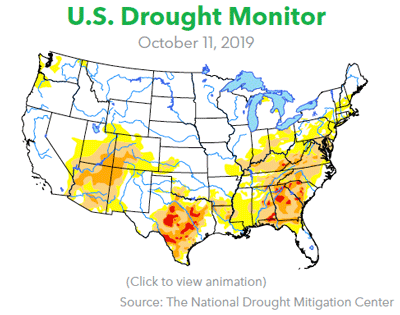 Eastern Cornbelt:
Eastern Cornbelt:
As with most of the Midwest and Central Plains, the Eastern Cornbelt was expecting significantly lower temperatures as the week progressed. Lows down to the mid-30s were in the Oct. 11 forecast for central Illinois, with rain moving through parts of the state late on Oct. 10.
Up to a half-inch of rain was expected on Oct. 11 in central Indiana, with temperatures dropping to unseasonable lows after 32 consecutive days of above-normal temperatures. In northern Ohio, too, highs were predicted to only reach the 50s and 60s over the weekend, with showers moving through many parts of the state.
USDA reported that 11-15 percent of the regional corn crop was harvested by Oct. 6, well behind the average pace. The soybean crop was at a similar stage, with 11-18 percent of the acreage harvested in the region. USDA assigned good or excellent ratings to 43-46 percent of the corn and soybeans in Illinois, compared with 32-34 percent in Indiana and Ohio.
Western Cornbelt:
A strong cold front was expected to impact much of the Western Cornbelt late in the week. Heavy snow was in the forecast for parts of the Dakotas, with cold air from that system – along with 40 mph wind gusts – expected to push temperatures down to below freezing on Oct. 11-12 in parts of Iowa.
Much of Missouri was also under a freeze watch for the weekend, but Nebraska was bracing for the biggest impact. Lows were expected to drop into the 20s and low-30s in parts of the state on Oct. 11-12, with a mixture of rain and snow in the weekend forecast for areas of northern and central Nebraska.
Sources reported “a little harvesting” underway in Iowa during the week, but the pace was expected to stall with the incoming moisture and cold temperatures.
Just 3 percent of Iowa’s corn was harvested by Oct. 6, compared with 12 percent in Nebraska and 35 percent in Missouri. The soybean harvest was 5-6 percent complete in Iowa and Missouri by that date, compared with 14 percent in Nebraska. USDA placed fully 73-74 percent of Nebraska’s corn and soybeans in the good or excellent categories, compared with 64-65 percent in Iowa, and 45-53 percent in Missouri.
Missouri’s rice crop was 84 percent harvested by Oct. 6, but only 7 percent of the state’s cotton crop had been picked by that date, with just 19 percent of the cotton rated as good or excellent. Nebraska growers were just starting the sorghum harvest, with 4 percent of the crop in the bin and fully 81 percent of the acreage rated as good or excellent.
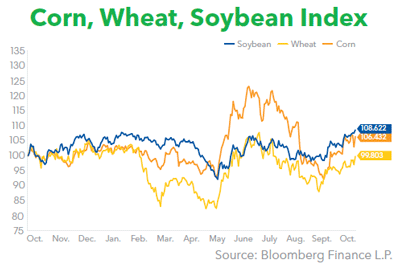 Southern Plains:
Southern Plains:
Much cooler weather was reported across the Southern Plains as the week advanced, along with storms in some locations. The previous weekend brought heavy rains to the Tulsa area, which caused river flooding in some locations.
Highs in the 70s were reported in Kansas at midweek, but a strong cold front brought thunderstorms and then unseasonably low temperatures, with wind chills expected to drop into the 20s by Oct. 11. The season’s first frost was expected across a wide swathe of the state on that date, along with a dusting of snow in some parts of northern Kansas.
Snowfall also hit Colorado’s Front Range on Oct. 9, with record lows expected in Denver on Oct. 11. Temperatures in the 50s were reported in northern and central Oklahoma at Oct. 10, with reports of wind and hail in some locations. Wind chills in the 30s were expected in Oklahoma City on Oct. 11.
Although the week began with temperatures in the low- to mid-90s across northern Texas, highs were only expected to reach the 50s and possibly low-60s on Oct. 11. Forecasts also called for showers and thunderstorms in parts of Texas on Oct. 10.
Harvest was underway on a wide range of crops in the Southern Plains, with quality described as mixed. “Cotton defoliation is going on in the High Plains,” commented one Texas source at midweek. “High heat late in the season has hurt the corn crop. We were thinking 200+ bushels/acre, but now it’s looking like 150 bu/a on corn.”
The corn harvest as of Oct. 6 was estimated at 17 percent complete in Colorado, 36 percent in Kansas, and 74 percent in Texas, with good or excellent ratings assigned to 72 percent of Colorado’s crop, 62 percent in Kansas, and 52 percent in Texas.
Kansas growers also had 5 percent of the soybeans and 7 percent of the sunflowers harvested by Oct. 6, with 57 percent of the soybean crop rated as good or excellent. The cotton harvest, while not yet started in Kansas, was 25 percent complete in Texas, with good or excellent ratings assigned to just 16 percent of Oklahoma’s crop, 30 percent in Texas, and 47 percent in Kansas.
Sorghum quality was considerably better in the region, however, with 61-71 percent of the acreage rated as good or excellent. The sorghum harvest as of Oct. 6 was 87 percent complete in Texas, 24 percent in Oklahoma, 17 percent in Colorado, and just 10 percent in Kansas.
South Central:
A strong cold front was taking aim at the South Central region later in the week, and was expected to plunge temperatures to near freezing in Arkansas, Tennessee, and Kentucky.
As much as 5-10 inches of rain hit northwestern Arkansas on Oct. 6, prompting flash flooding in many locations. Highs climbed to the 80s again at midweek, but another round of showers and gusty winds on Oct. 10 dropped temperatures from the 60s and 70s down into the 40s and 50s. Lows into the 30s and 40s were expected in northern Arkansas on Oct. 11.
A similar weather change was taking place in Tennessee and Kentucky, where parts of central and eastern Kentucky collected up to 1-3 inches of rainfall as the week began. Highs in both states were expected to drop from the 80s down to the low-60s on Oct. 11-12, with some areas bracing for lows in the 30s and 40s by Oct. 13.
The region was “in full harvest” at mid-month, according to sources, with generally favorable crop conditions reported. “We were actually very dry in the Mid-South until we got some moisture the last couple of days,” said one regional contact.
USDA said 80-98 percent of the regional rice crop was harvested by Oct. 6, and 76-88 percent of the corn was harvested in Kentucky and Tennessee by that date, with both states tracking ahead of their average pace. Good or excellent ratings were assigned to fully 85 percent of Tennessee’s corn crop, compared with 65 percent in Kentucky.
The soybean harvest was rated at 80 percent complete in Louisiana, 58 percent in Mississippi, 38-39 percent in Arkansas and Tennessee, and 31 percent in Kentucky, with good or excellent ratings assigned to 64-66 percent of the acreage in Louisiana and Mississippi, 57-59 percent in Arkansas and Tennessee, and 47 percent in Kentucky.
The cotton harvest as of Oct. 6 was 51 percent complete in Louisiana, 41 percent in Arkansas, 37 percent in Mississippi, and 22 percent in Tennessee, with all states but Louisiana tracking ahead of their five-year averages. USDA rated fully 83 percent of the Arkansas cotton crop as good or excellent, compared with 60-63 percent in the rest of the region.
Southeast:
Harvesting was well underway in the Southeast region in early October, although some areas were hit with rain during the week. Heavy rain and thunderstorms developed across central and southern Florida on Oct. 8, and northern Alabama was bracing for precipitation on Oct. 11 from a strong cold front moving across the country.
An early nor-easter was expected to bring high winds and 5-8 inches of rain to parts of New England over the coming weekend, with North Carolina also bracing for possible coastal flooding along the northern Outer Banks.
Extremely dry conditions in recent weeks allowed growers to make quick progress on the harvest of corn, soybeans, cotton, and peanuts, but one source said “yields have fallen off” as a result. North Carolina’s corn was 91 percent harvested by Oct. 6, along with 17 percent of the state’s soybeans, with 41-44 percent of the acreage rated as good or excellent.
The regional cotton harvest was progressing ahead of normal, with 25-28 percent of the crop picked in Alabama, Georgia, and South Carolina by Oct. 6, compared with 16-18 percent in North Carolina and Virginia. USDA rated fully 72 percent of Virginia’s cotton as good or excellent, along with 62 percent of the crop in South Carolina, 49-53 percent in Alabama and Georgia, and 34 percent in North Carolina.
The peanut harvest was also ahead of schedule, but with the moisture content at just 6-8 percent, sources said growers in some areas were shelling at night to try to pick up some extra moisture. Harvest progress as of Oct. 6 was estimated at 56-60 percent in Alabama, Florida and Virginia, 46 percent in Georgia, and 33-37 percent in the Carolinas, with good or excellent ratings assigned to 80 percent of the crop in Virginia, 59-60 percent in the Carolinas, 47-54 percent in Alabama and Georgia, and just 36 percent in Florida.
Transportation
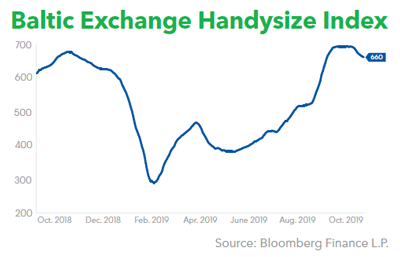 U.S. Gulf:
U.S. Gulf:
Movements above New Orleans continued to see restrictions due to areas of shoaling. Maximum tow lengths were reduced by five barges from the typical 40-barge limits, with further reductions noted around low-water zones. Ensuing delays were expected to reach 1-2 days in each direction.
Navigation and towing continued to be limited in the Houston Ship Channel after several loose barges struck the San Jacinto River’s I-10 bridge on Sept. 20 (GM Sept. 27, p. 22), sources reported. Vessels were capped at a single barge per tow, while navigation was limited to daylight hours only. The restrictions were projected to remain in place while bridge repairs are underway.
Sources described a return to normal navigation at the Port Arthur Bridge, located at Mile 289 in the West Canal. Swift currents were previously blamed for 6-12 hour delays in the area.
Replacement guidewall construction underway at Bayou Boeuf Lock limited transit to overnight hours only. The project is scheduled to run through Oct. 31, ahead of the previous Nov. 10 estimate.
Sporadic shutdowns at Leland Bowman Lock reported since Sept. 3 were slated to conclude on Oct. 14. Lock repairs have necessitated daily shutdowns between 6:30 a.m. and 6:00 p.m. Bayou Sorrel Lock is scheduled to remain offline through Oct. 19 due to repairs underway on the site’s southern gate. The project has completely closed the lock to navigation.
Sources predicted a return to normal operating hours at Brazos Lock on Oct. 15 after weeks of reported daytime navigation outages. Intermittent delays were reported up to 13.5 hours for the week. Industrial Lock waits were quoted in a 5-10 hour range on Oct. 9, while boats transiting Algiers Lock noted 4-8 hour wait times. Sporadic Colorado Lock delays were heard topping out at 17 hours.
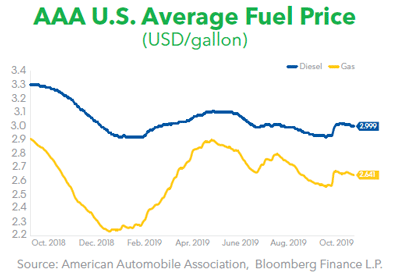 Mississippi River:
Mississippi River:
Reduced tow sizes continued on southbound travel through the upper Mississippi River.
The Corps slashed tows to nine barges from St. Paul to Prairie du Chien, Wisc., located at Mile 791, while tow lengths were raised to 12 barges from Prairie du Chien to St. Louis. Improvement in the upper river’s shoaling situation was counteracted by rising water levels, sources said, resulting in an indefinite extension of the restrictions.
High water in St. Louis prompted daylight-only travel restrictions through the St. Louis harbor. Overnight travel will remain off limits until the St. Louis gauge falls below the 25-foot mark. The National Weather Service (NWS) noted area levels at a minor-flood 30.93 feet on Oct. 9. Forecasts called for the gauge to hit 25 feet on Oct. 22, later than the service’s previous Oct 19-21 estimate.
Northbound tow sizes were limited between Cairo, Ill., and St. Louis due to fast currents at Thebes, Ill., located at Mile 50 on the upper river. Vessels continued to be permitted for 15 loaded barges on a tow, but empty barges were reduced to three barges from the usual nine allowed.
Unusual vessel congestion continued as a factor in the upper river, shippers said. The heavier-than-usual traffic was blamed for lengthy lock delays and slowed transit speeds.
On the lower river, shippers continued to note numerous areas of shoaling and low water. Dredges arrived at Victoria Bend, located at Mile 595, on Oct. 7, resulting in a complete transit shutdown lasting approximately 24 hours. Northbound transit resumed at midday on Oct. 8, while southbound tows were scheduled to resume navigation on Oct. 9 Dredging will continue at the site through Oct. 17.
Additional shoaling delays were reported at Miles 676, 758, 807, 816, and 870, limiting tows to 30 or fewer barges through each trouble spot. General low-water conditions limited maximum two lengths to 35 barges on the lower river, down from the usual 40-barge tows. Shippers expected the limits to add 1-2 days of travel time in both directions.
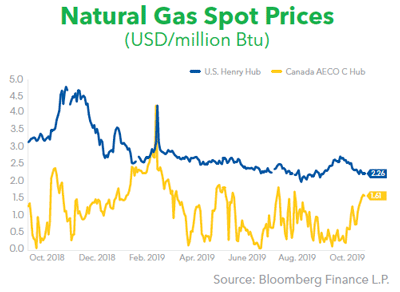 Illinois River:
Illinois River:
Heavy rainfall was said to result in quickly rising waters on the Illinois River in recent weeks. The swollen waters prolonged shutdowns previously underway at Marseilles Lock, Starved Rock Lock, and Lockport Lock, all of which were originally scheduled to return to service on Oct. 5.
In an effort to speed completion, the Corps was said to reroute additional resources to the projects, prompting revised estimates for both Marseilles and Starved Rock to return to service on Oct. 11-13. Lockport Lock reopened on Oct. 6, sources said.
A fish barrier at Mile 296 will block navigation from 7:00 a.m. to 11:00 a.m. and 1:00 p.m. to 5:00 p.m. on Nov. 18-22, sources said.
Lock shutdowns scheduled to begin in third-quarter 2020 will completely halt Illinois River navigation. Marseilles Lock, Starved Rock Lock, and LaGrange Lock are all due to close on July 1 for up to 120 days. All three sites are tentatively slate to reopen on Oct. 31.
In addition, Dresden Island Lock and Brandon Road Lock will each undergo approximately 90 days of restricted navigation access. Dresden Island and Brandon Road will also be subject to one 14-day complete shutdown each between July 1 and Oct. 31, 2020.
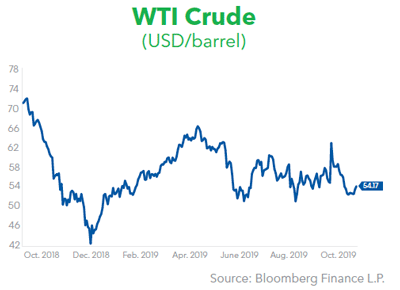 Ohio River:
Ohio River:
The Ohio River’s Willow Island Lock was experiencing a primary chamber shutdown slated to continue through Nov. 1. Tows were routed through the lock’s smaller secondary chamber, with delays reported in a 7-12 hour range.
Repairs underway at both Smithland Lock chambers have prompted the Corps to alternate navigation between the two chambers, sources said, creating the potential for intermittent delays. Work is scheduled to continue at the site through Nov. 15.
On the Tennessee River, drawbridge repairs at Mile 304 will block river navigation 7:00 a.m. to 5:00 p.m. on Oct. 21-31. Kentucky Lock delays were generally noted under 10 hours for the week, although a handful of tows were heard to require up to 19 hours to pass the site.
Arkansas River:
The upper Arkansas River remains officially open for navigation, allowing barges to reach the Catoosa, Okla., area after the previous extended closure. Tows nevertheless continue to be limited to six barges while efforts to re-buoy the entire river are underway, currently predicted to continue into early November. Arkansas River barge counts are limited to 12 barges during normal operating conditions.
Sources are predicting 1-2 months will be required to clear the backlog of barges awaiting pickup at both ends of the river.
Dry Fertilizer Barge Rates
| 10/11/2019 | Last Week | |
| Memphis | 10.00-14.00 | 10.00-14.00 |
| St. Louis | 10.00-16.00 | 10.00-16.00 |
| Peoria | 14.00-20.00 | 14.00-20.00 |
| Cincinnati | 14.00-22.00 | 14.00-22.00 |
| St. Paul | 18.00-24.00 | 18.00-24.00 |
| Catoosa/Inola | 19.00-23.00 | 19.00-23.00 |
TFI Praises Rail Rate Reforms from the STB
The Fertilizer Institute (TFI) President and CEO Chris Jahn on Oct. 8 welcomed a number of proposed reforms from the Surface Transportation Board (STB) related to railroad demurrage and accessorial charges levied against shippers.
“Rail is critical to the movement of fertilizer,” said Jahn. “The fertilizer industry appreciates the board’s attention to demurrage and accessorial charges, which have increased a great deal since the rail industry implemented precision scheduled railroading (PSR). These charges are completely unfair and unreasonable when shippers are unable to avoid them due to new rail carrier operating procedures, poor rail service, ‘bunching’ of cars, or other factors. TFI remains committed, and welcomes the opportunity, to work with the board and railroads to improve fairness, service, and system fluidity.”
TFI testified at a May 2019 STB hearing on demurrage and accessorial charges related to implementation of PSR and the direction of the rail industry (GM May 3, p. 27). “PSR represents an obsession with operating ratio at the expense of customer service and reflects a lack of competition in the rail industry. These issues do not happen in other shipping modes,” Jahn said. “Today’s announcement is good news, and these proceedings appropriately prioritize network fluidity, market fairness, reciprocity, and transparency.”
CommoditAg Expands Into Missouri, Arkansas with Addition of MFA as Retail Partner
CommoditAg.com, the e-commerce crop inputs platform headquartered in Effingham, Ill., announced on Oct. 8 that it has added MFA Inc. to its retail network, expanding the company’s reach into Missouri and Arkansas with MFA’s five distribution locations in those two states.
MFA is a regional farm supply and marketing cooperative headquartered in Columbia, Mo. MFA’s Missouri warehouses in Sedalia, Palmyra, and Chillicothe, as well as its Arkansas facilities in Trumann and Altheimer, will now provide “greater access” for Midwest farmers who place orders for crop input products on the CommoditAg online sales platform, said Tim Bence, Chief Operations Officer at CommoditAg.
“With CommoditAg LIVE, shopping online at CommoditAg.com gives our grower customers the ordering convenience they want, the real-time and transparent access to inventory they need, and the customer support they’ve come to expect from us,” Bence said. “Our customers can have products shipped or pick-up products at one of our convenient warehouse locations. The addition of five MFA locations makes same-day pickup even easier. CommoditAg customers get all of this with no membership fee. We call this Convenience powered by Experience.”
MFA provides a full line of agronomic inputs and services for all major row crops and most specialty crops, as well as grain marketing, feed, animal health products, farm supplies, and precision ag services. The company has 145 MFA Agri Services Centers across Missouri, Arkansas, Oklahoma, Kansas, and Iowa, as well as some 24 local affiliates with 20 branches.
“MFA is committed to meeting the evolving needs of today’s Midwest farmers,” said Jeremy Sheffer, MFA’s Director of Crop Protection. “We intend to lead the way in finding innovative solutions to improve on-farm productivity and profitability regardless of what type or size of farm. CommoditAg is one more way for us to bring innovation and convenience to our customers.”
MFA is the ninth retail partner to join CommoditAg since the platform’s launch in late 2017 (GM Jan. 5, 2018). Other retailers in the CommoditAg network include Premier Companies in Indiana (GM May 10, 2019); Crystal Valley Cooperative and Farmward Cooperative in Minnesota (GM Aug. 24; Aug. 31, 2018); Liqui-Grow in Illinois and Iowa (GM June 29, 2018); MKC in Kansas (GM March 2, 2018); Landmark Services Cooperative in Wisconsin (GM Feb. 2, 2018); and founding partners The Equity in Illinois and Sunrise Cooperative in Ohio.